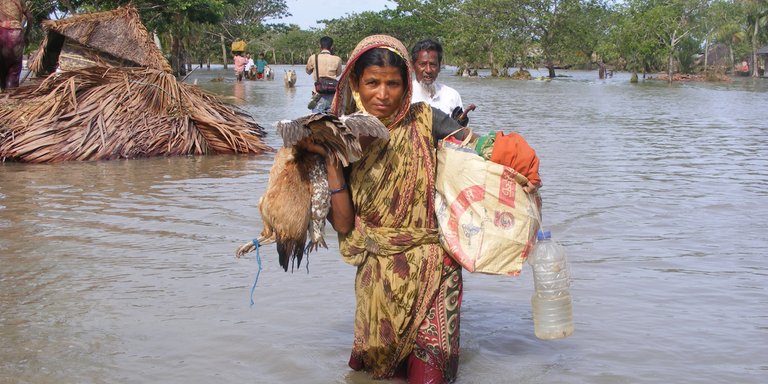
Floating Homes - The project picks up speed again
RISK Award report (March 2021)
properties.trackTitle
properties.trackSubtitle
Architectural and structural design of the disaster-resilient home
The project managers and architects are working on a disaster-proof, resilient home for families, as well as on a design for a community centre. The community centre (school) will allow all the members of the community to learn about the new forms of housing. Since old traditional methods of building are deeply anchored in people's minds, only ongoing communication and active persuasion can create interest in new approaches.
The building’s design aims to meet all three dimensions of sustainability: economic, ecological and social. First and foremost, the family home must be affordable for low-income groups. So the target is a price of less than 2,000 US dollars. The home should generate at least enough income through its own food production that families can run the house cost-neutrally. The building materials must come from regional, renewable resources. Energy costs must be kept as low as possible, which requires the use of solar energy and good insulation. Since climate change will lead to an increased number of hot days, this is becoming more and more important.
The social dimension is also critical. All sections of the population should be heard during the design process. A series of additional participatory workshops was therefore held with women, men, community leaders and children. Additional funding must also be secured to scale the impact. Otherwise, only a few people will benefit from the project, and this could create feelings of resentment. In a final concept phase at the end of March 2021, the stability of the building structure against storm surge, sea level rise, tidal flooding, and salinity intrusion will be tested once again. Project lead Nandan Mukherjee will develop a hydrodynamic model to simulate the storm surge and climate change scenarios in the Kutubdia area.

Further funding opportunities

Dissemination and upscaling
Resilience Solution plans to organise a national dissemination workshop in April 2021. Depending on the pandemic situation, this will be held on site, or as a digital event. Since the target groups around Kutubdia do not have a stable internet connection, an on-site event would be preferred.
A market study is being conducted by the field team to filter out the potential beneficiaries in Kutubdia and the surrounding area. About 2,000 families who could fully or partly afford the new houses fall into the project’s target group. The study analyses which income potentials are available, where and how many subsidies to buy the disaster resilient houses would be needed, and whether there are already NGOs that could contribute to providing financial support to the families in need. The field team will also meet with the local, regional and national administration bodies to discuss how the idea of ecosystem-based adaptation and nature-based solution options can be incorporated into the national disaster management plan and the national building code.

We are very pleased that the field work could be resumed. We are convinced that the project will continue and believe it offers a replicable concept of an affordable, disaster-proof housing project.
Christian Barthelt, 20 March 2021
******************
Update from April 8: Unfortunately, the infection figures have increased drastically in Bangladesh over the last few days. For this reason, the government was forced to activate new curfews and protective mechanisms. Somewhat surprisingly, the country has been back in a hard lockdown since the weekend. Travel - even within the country - has been made more difficult, if not impossible. The project milestones agreed with the Foundation have been largely achieved. Nevertheless, we naturally hope that the project will continue to run successfully after our funding phase, and we support it as much as we can.
******************


